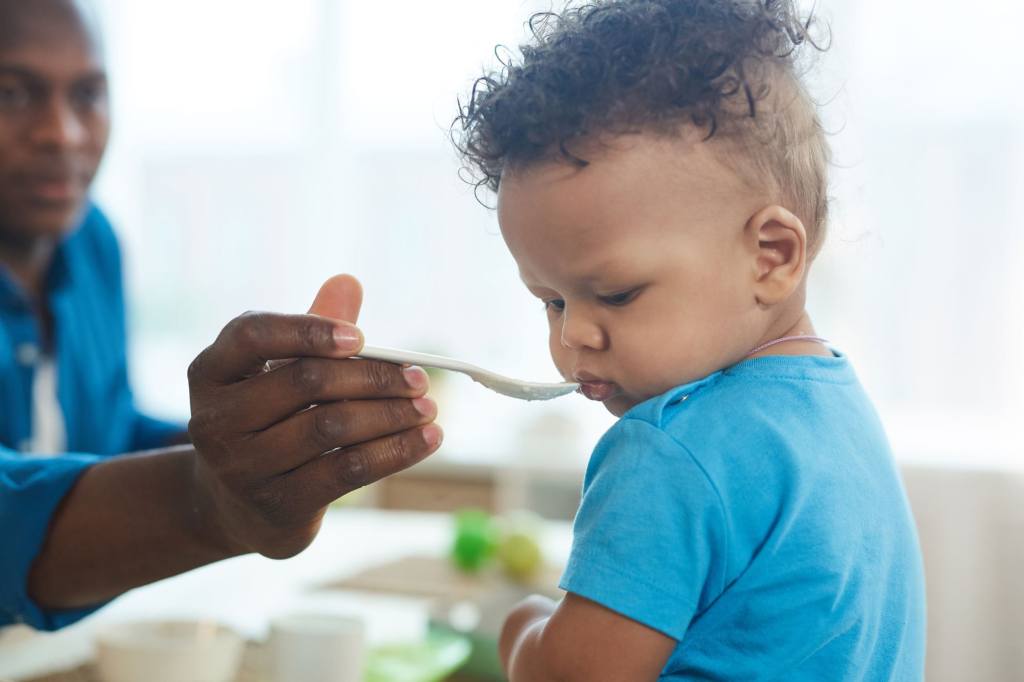Your cart is currently empty!
Incorporating strawberries into a child’s diet can help support healthy brain development and improve cognitive function, mood, vision, and overall health. It is important to note that while strawberries are a healthy food choice, they should be consumed in moderation as part of a balanced diet that includes a variety of fruits, vegetables, whole grains,…
Strawberries are the first fruit to ripen in the spring, and they are the first fruit that many children fall in love with. As one of the most commonly consumed berries, strawberries are also among the top 20 fruits with the highest source of antioxidants and potassium.
Sources of Nutrients for Development
Strawberries are a great source of several important nutrients that are essential for children’s growth and development, including:
Vitamin C: Strawberries are a great source of vitamin C, which plays a key role in supporting a healthy immune system and promoting healthy skin and tissue growth.
Fiber: Strawberries are also a good source of fiber, which can help promote healthy digestion and prevent constipation.
Potassium: Strawberries are a good source of potassium, an important mineral that helps support healthy blood pressure and heart function.
Antioxidants: Strawberries are rich in antioxidants, which can help protect the body’s cells from damage caused by harmful free radicals.
FUN FACT: Unlike their friend the blueberry, ANCIENT ROMANS BELIEVED STRAWBERRIES COULD HELP WITH TREATING DEPRESSION & BAD BREATH.
Benefits of Strawberries for Developing Minds
Strawberries have several additional benefits for developing minds. A study published in the journal Nutrients in 2019 found that consuming a strawberry-based beverage improved cognitive function in healthy children between the ages of 8 and 10. The study found that children who consumed the strawberry beverage had better working memory and attention compared to those who consumed a placebo beverage.
Improved cognitive function: Strawberries are rich in flavonoids, which have been shown to improve cognitive function and memory in both children and adults.
Better mood: Strawberries contain folate, which has been linked to better mood regulation and reduced risk of depression.
Diving into this a bit more, a study published in the Journal of Affective Disorders in 2018 found that a diet rich in fruits, including strawberries, was associated with a reduced risk of depression in young adults. However, this study did not specifically examine the effects of strawberries on mood in children.
While the existing evidence suggests that strawberries may have some potential benefits for mood and mental health, more research is needed to determine the specific effects of strawberries on children’s mood and behavior.
Enhanced vision: Strawberries are a good source of vitamin C and other antioxidants, which help to protect the eyes from damage caused by harmful free radicals and support healthy vision.
*Want to learn more about baby’s vision at 6 months? Read more here.
*
Reduced inflammation: Strawberries contain anti-inflammatory compounds that can help reduce inflammation in the body, including the brain. This may help to improve overall brain function and reduce the risk of cognitive decline.
To Puree or Not to Puree?
When introducing strawberries to young children, it is important to ensure that they are thoroughly washed and cut into small, bite-sized pieces to avoid any potential choking hazards. Additionally, it is important to note that strawberries may cause an allergic reaction in some children, so it is recommended to introduce them in small quantities and monitor for any adverse reactions.
In terms of serving size, the recommended daily intake of fruit for children between the ages of 1 and 2 is about 1 cup per day. This can be divided into smaller servings throughout the day, depending on the child’s appetite and dietary needs. When introducing strawberries, it is recommended to start with a small serving size of 1-2 small strawberries, cut into small pieces, and gradually increase the amount as the child becomes accustomed to the taste and texture. One cup of strawberries is equal to about 8 regular-sized strawberries.
It is important to note that every child’s dietary needs and preferences are different, so it is important to consult with a healthcare provider or registered dietitian for personalized recommendations.
Sources
- Afrin S, Gasparrini M, Forbes-Hernandez TY, Reboredo-Rodriguez P, Mezzetti B, Varela-López A, Giampieri F, Battino M. Promising Health Benefits of the Strawberry: A Focus on Clinical Studies. J Agric Food Chem. 2016 Jun 8;64(22):4435-49. doi: 10.1021/acs.jafc.6b00857. Epub 2016 May 31. PMID: 27172913.
- United States Department of Agriculture Food and Nutrition.
- Głąbska D, Guzek D, Groele B, Gutkowska K. Fruit and Vegetable Intake and Mental Health in Adults: A Systematic Review. Nutrients. 2020 Jan 1;12(1):115. doi: 10.3390/nu12010115. PMID: 31906271; PMCID: PMC7019743.
- Miller K, Feucht W, Schmid M. Bioactive Compounds of Strawberry and Blueberry and Their Potential Health Effects Based on Human Intervention Studies: A Brief Overview. Nutrients. 2019 Jul 2;11(7):1510. doi: 10.3390/nu11071510. PMID: 31269727; PMCID: PMC6683271.









